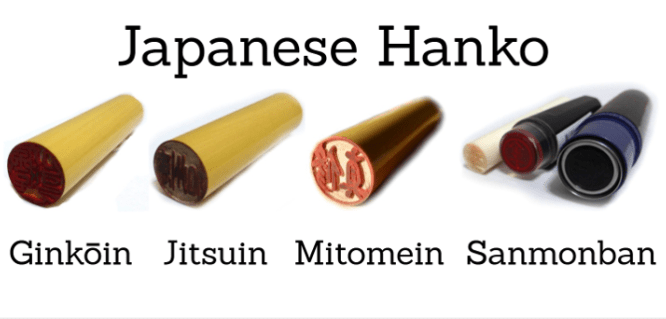Have you heard of Hanko? It’s a must-have item if you’re planning to stay in Japan for long. If you happen to visit Japan, you’ll notice that they do something really unique when they purchase a car, sign a lease, write a contract or application, etc. instead of signature.
The Japanese make use of a Hanko stamp. It is equivalent to signing the bottom of a document, which is something you might already be doing on a day-to-day basis but instead of using a pen, people in Japan use a personal stamp. Not only is it easier and faster (say goodbye to tired hands), the Japanese also regard Hanko as a significant part of their culture for it has been a custom as far back as 57 AD.
Having a Hanko is Handy if You Live in Japan
If you are a foreigner working or studying in Japan, there are instances where having a Hanko comes in handy. Often you’ll need to sign a document where the space for a signature was intended for a Hanko and your own signature will likely not fit in it. When transacting with financial institutions, you will not be able to open an account or get a cash-card without one. Usually, a Hanko seal has the owner’s name in Kanji inscribed on a circle less than two centimeters across. The stamp is slim and narrow and can easily fit the palm of your hand. As a non-Japanese, you can choose which part of your name to use for your Hanko stamp. This will usually be written in Katakana. Each local ward office has their regulation for foeigner’s Hanko, so if you need to make one for Jitsuin or Ginkōin (explained later in this article), you may need to check with them if other than Katakana letter are acceptable. Just be mindful that the space in a Hanko is quite limited.
Hanko is a Great Souvenir for Tourists
For the Japanese, a Hanko is not just a mere signature stamp. It is a marriage of the rich Japanese history and the Japanese people’s ingenuity. This little stamp is forged by years of upheld tradition and its use will certainly continue for years to come. In Japan, there are hundreds of options when it comes to choosing your very own, customized Hanko stamp. You can choose something that is made of metal, plastic, crystal, tusk, titanium, natural stone, or wood. Depending on the material used and the complexity of the Kanji characters, the price of a Hanko seal can range from 1,000 yen to over 30,000 yen. Hanko stamps come in different shapes and sizes, and you can get them from various hole in the wall artisan shops to 100-yen stores, so it is something that could be fun to collect over time.
Today, Hanko stamps are quickly becoming the souvenir of choice for travelers who visit Japan because not only is it something that no one else in the world can have since you have your own name carved on it, but also because it is as if you are taking home with you an important part of Japanese culture.
Get to Know the Different Types of Hanko (Personal use)
Ginkōin (銀行印) is used when you open a bank account. The financial institution keeps a copy of the Inkan 印鑑 (the seal stamped on paper by a Hanko, although nowadays the Japanese use Inkan to refer to Hanko) and requires you to bring your Hanko when you withdraw huge sums of money (500,000 yen and up). It is also required when closing your bank account.
Jitsuin (実印) is a Hanko which is registered at city hall or a ward office. If you register your Hanko, you can get a certificate showing that your Inkan is yours. This process is necessary when you purchase big ticket items such as house or car. When executing a contract to purchase these items, you also need to submit the certificate along with the Inkan.
Mitomein (認印) is the most general Hanko. Mitomein means to mark acknowledgement. You can use this Hanko to acknowledge that you’ve read documents, received registered mail or parcel, or applied to join a fitness gym.
Sanmonban (三文判) is a ready-made cheap Hanko. This type of Hanko is sold at 100-yen shops. Sanmonban is a cheap alternative to Mitomein. A rubber stamp-type Hanko with built-in ink called Shachihata is also available. This is actually a product name, but since it’s so popular, most people use it as a generic term for self-inking Hanko.
Get to Know the Different Types of Hanko (Corporate use)
Kaisha Jitsuin (Company Registered Seal 会社実印) is also know as “Daihyōshain” (代表者印), and this is the must item for incorporation. This company seal is also used for contract documents with public authorities. Generally, round type seal is used with company name in outer frame and the “代表取締役印”(company representative’s seal) in inner frame.
Kaisha Ginkōin (Company Bank Seal 会社銀行印) is used when you open a company bank account. Generally, round type seal (smaller than Jitsuin) is used with company name in outer frame and “銀行之印” (Seal for Bank) letters in inner frame.
Kaisha Mitomein (aka “Kakuin” 角印 or 社印 (Shain)) is a square type seal and is used for Purchase Order, Invoice, general documents, internal documents, etc. Only company name is curved in the seal.
You can check the sample imprint for company seal here.
Hope this article is useful and interesting to you! 🙂
If you want to have your own Hanko, whether you live in Japan or overseas, you can order from https://japanese-name-stamp.com/.
Check our Hanko Facebook to see our customers’ reviews.


